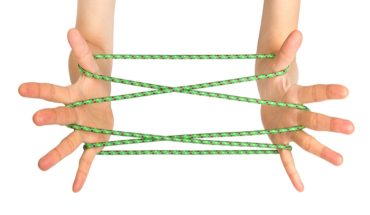Experts identify 12 week ‘window’ crucial to avoiding chronic back pain. Raising awareness this Back Care Awareness Week, 3-7 October 2022, signpost back ‘niggles’ that should not be ignored.
A leading UK back specialist is urging those with back pain to seek professional help within the first 12 weeks of injury to avoid long-term back pain. Ahead of this yea’s national Back Care Awareness Week (3-7 October) osteopath Mr Michael Fatica is also highlighting the dangers of longer-term pain medication, which can interfere with the body’s absorption of key nutrients and therefore impact its ability to heal itself.
Michael Fatica from Back in Shape, a dedicated online rehabilitation programme for back pain, says: “Many physiological and physical changes take place during the first 12-week period of back pain, such as muscle wasting and weakening, which can have a significant effect on recovery time. The notion that back pain will resolve itself in 6-12 weeks is pure myth, and a short-term reliance on pain killers can do more harm than good. Our general perception of back pain therefore needs to change. We wouldn’t put up with pain in other areas of the body for 12 weeks, and the back should be no different – it’s the main support structure for the entire body.”
Common patterns and features that help to compensate and enable those with back pain to struggle on past the 12-week mark without seeking help include:
- Moving in a different way when walking; sitting, standing and bearing weight in general;
- Developing habits and ‘relief’ movements that try to alleviate the pain such as unorthodox stretching, which often involves ‘rounding’ the back – the worst possible movement for back pain and actually reinforces the gradual destabilisation of the lower lumbar spine;
- Regular medication; and
- Avoidance of social interactions, which can lead to feelings of isolation and even depression.
Michael adds: “All of these habits combined create a pattern of behaviour that not only helps those affected to remain in long-term pain, but they can begin to create secondary problems. This can include stiffness in the hips from abnormal weight bearing which has a knock on effect on the lower back and serve as an additional barrier to recovery.”
According to Michael, it is much easier to help the healing process occur correctly and reduce the risk of long-term issues if the correct intervention is sought as early as possible. Patients need to be aware of the key steps to put in place to help them successfully navigate the healing process and avoid chronicity setting in. These include:
- Core strength – invest time and effort in a daily, strength-based exercise programme which includes exercises like squats and modified dead bugs. This provides protection for the injured tissues so they can recover effectively. Aim for a minimum of 15 minutes per day and build up steadily from here.
- Diet – fuel the body with a “protein first” approach to help strengthen lumbar muscles and support healing. Try to incorporate foods such as meat, fish, or other plant-based protein sources in your daily diet.
- Good habits – understand how to adopt healthy and back friendly practices into the daily routine. These can include learning to get out of bed or a chair correctly as well as how to hold your body in an efficient posture that doesn’t increase loading on the injured lower back.
Finally, Michael warns against the long-term use of pain medication for those with back pain. “Aside from the brain fog and general grogginess that can often be associated with stronger pain medications, they can often also lead to abdominal discomfort and disruption of the gut. Two key things happen here. Firstly, when we have stomach pain, we round our back repeatedly, which further destabilises the lower lumbar spine. Secondly, when working to heal, rebuild and rehabilitate, nutrition is the fuel our body needs to do this. With a drug-laden, inflamed gut, we are going to be significantly disadvantaged when it comes to absorbing the necessary nutrition.”
Ultimately, Michael believes that we all need to take responsibility for our back health. “Factors such as dietary changes, lifestyle and movement habits and fundamental levels of strength and fitness all need to be explored in relation to back pain, and this is solely down to the individual. We need to recognise and take control of the problem and its solution. While this process will not be without flare-ups along the way, with the right education, support and guidance, patients are able to slowly undertake the rebuilding process with long-term results.”
Michael’s ‘top 3’ back niggles that should never be ignored and could have serious long-term repercussion on back health, include:
- Aching or stiffness in the lower back that is recurrent. It’s perfectly reasonable to have some stiffness in the low back after a particularly intensive back workout, but if you’re finding that back ache is becoming a daily feature for days at a time, or even weeks, you should certainly look to get it addressed.
- Muscle spasm without a specific cause. Muscles do not go into spasm of their own accord. Recognise that the muscles are reacting to an underlying injury in the back and like point one, if these are becoming recurring features or lasting beyond a few days, it’s time to be proactive!
- Trapped nerves or sharp shooting pain into the buttock or leg. This is often the sign of irritation at the ‘nerve roots’ which is where the small nerves leave the spinal column. Often termed ‘sciatica’ it is always best to be proactive and begin to work on remedying the cause of this irritation of the nerves.
For more information, please visit www.backinshapeprogram.com
- New lipid-based pathway discovered as key to memory formation - 25th June 2025
- Crucial link could explain how Alzheimer’s takes hold - 25th June 2025
- Understanding Your Mind Can Improve Daily Life - 25th June 2025







Absolutely insightful, Hippocratic Post! It’s alarming yet vital to understand the importance of the 12-week window. Michael Fatica’s perspective on back pain and its long-term implications is a game-changer. Not only does it challenge popular myths, but it also offers a comprehensive understanding of how our body works, reacts and heals. This deep dive into the 12-week critical phase, especially the ‘top 3 niggles,’ is an essential addition to our understanding of back health. Kudos for shedding light on this subject and equipping readers with the knowledge to prioritize their spinal health. We mustn’t overlook these early signs, and as… Read more »